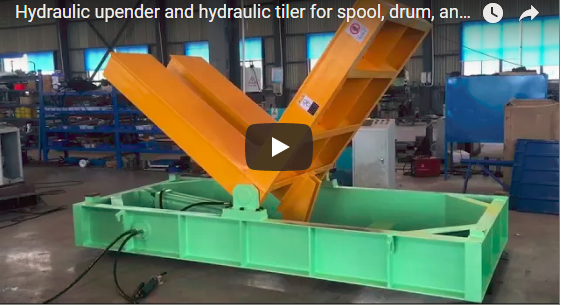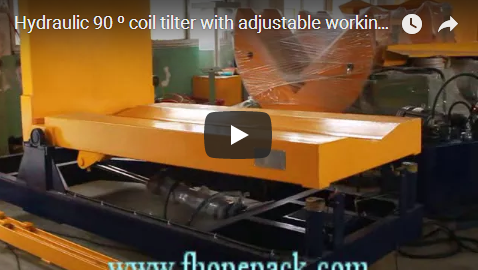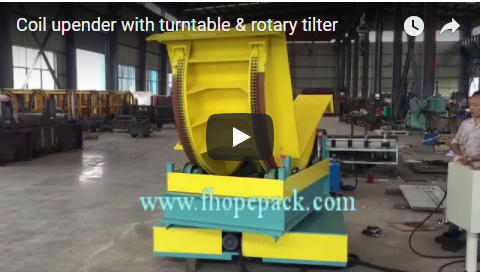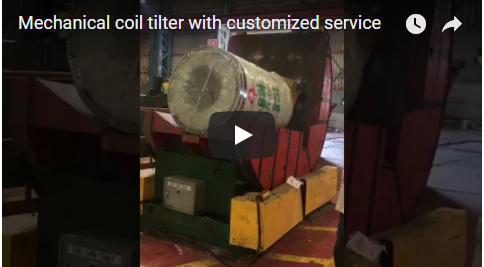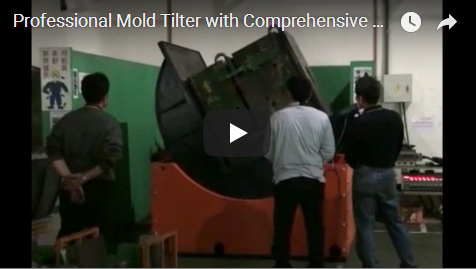Advanced Mold Flipping Table Technology: Enhancing Safety and Efficiency in Manufacturing Operations
The manual handling and rotation of large, heavy molds in foundry, die-casting, and injection molding operations present significant challenges, including risks to operator safety, potential mold damage, and process inefficiencies. Automated mold flipping tables, such as the FHOPE model demonstrated above, offer a robust engineering solution to these challenges, streamlining workflows and enhancing productivity.
Drawing upon principles seen in material handling patents (e.g., relating to controlled rotational mechanisms and secure clamping systems), these tables provide precise, automated 180-degree rotation of mold halves. This capability is crucial for various stages of the manufacturing process, including casting, mold inspection, cleaning, maintenance, and repair.
Core Functionality and Operational Principles
The fundamental purpose of the mold flipping table is to securely hold and precisely rotate mold halves around a central pivot axis. Key operational features often include:
- Automated Rotation: Enables efficient flipping between mold halves, facilitating easier access for operators or robotic systems.
- Secure Clamping: Robust mechanisms ensure mold halves are held firmly during the rotation cycle, preventing slippage or damage. Technologies often incorporate fail-safe locking features, a common focus in industrial equipment design patents.
- Controlled Motion: Utilizes electromechanical or hydraulic drive systems, often governed by Programmable Logic Controllers (PLCs), to ensure smooth, controlled acceleration and deceleration, minimizing stress on the mold and machinery.
Technical Specifications and Engineering Design
While specific configurations vary, typical mold flipping tables incorporate the following engineering elements:

- Load Capacity: Designed to handle specific weight ranges. The model shown supports mold halves up to 100 kg, though industrial applications often demand capacities extending to several tons.
- Cycle Time: Efficient cycle times are critical for throughput. This unit achieves discharge cycles up to 30 seconds, contributing to reduced overall process time compared to manual methods. Research in manufacturing automation consistently highlights cycle time reduction as a key performance indicator (KPI).
- Construction: Heavy-duty, welded steel frames provide rigidity and durability for demanding industrial environments. Finite Element Analysis (FEA) is often employed during design to ensure structural integrity under load.
- Drive System: Precision electric motors or hydraulic systems provide the rotational torque. Variable Frequency Drives (VFDs) may be used with electric motors for enhanced speed and motion control.
- Control System: PLCs (e.g., Siemens, Allen-Bradley) allow for programmable operation, parameter setting (rotation speed, dwell times), and integration with other factory automation systems via protocols like EtherNet/IP or PROFINET. Human-Machine Interfaces (HMIs) provide operator control and status feedback.
- Safety Features: Compliance with safety standards (e.g., CE marking, ISO 13849) is paramount. Features include:
- Emergency stop buttons (E-stops) compliant with ISO 13850.
- Physical guarding or light curtains to prevent operator access during rotation.
- Limit switches and sensors to monitor position and prevent over-travel.
- Overload protection for the drive system.
- Mechanical locking pins or brakes to secure the table in position.
Operational Advantages and Industry Impact
The adoption of automated mold flipping tables delivers significant, quantifiable benefits, frequently cited in industrial efficiency studies and trade publications like Packaging World:
- Enhanced Safety: Drastically reduces the risks of musculoskeletal injuries associated with manual lifting and manipulation of heavy molds, contributing to improved Occupational Safety and Health Administration (OSHA) compliance or equivalent regional standards.
- Increased Productivity: Automation significantly cuts down mold handling time compared to manual methods or using overhead cranes for rotation, leading to higher overall equipment effectiveness (OEE).
- Improved Mold Care: Gentle, controlled handling minimizes the risk of accidental damage to delicate mold surfaces or components, extending mold lifespan and reducing repair costs.
- Optimized Labor Utilization: Frees up skilled operators from strenuous manual tasks, allowing them to focus on value-added activities like quality control, machine operation, and process optimization.
- Process Consistency: Ensures repeatable and precise mold positioning for subsequent operations, contributing to higher part quality and reduced scrap rates.
Applications Across Industries
Mold flipping tables are essential equipment in various manufacturing sectors where molds are integral to the production process:
- Die Casting: Facilitating handling of heavy dies for automotive, aerospace, and consumer goods components.
- Injection Molding: Assisting in the maintenance and changeover of molds used for producing plastic parts.
- Foundries: Handling sand casting molds or investment casting patterns.
- Tool and Die Shops: Supporting the manufacturing and maintenance of molds and dies.
Conclusion
The FHOPE mold flipping table exemplifies the integration of robust mechanical engineering and intelligent automation to solve critical challenges in modern manufacturing. By automating the strenuous and potentially hazardous task of mold rotation, these systems offer a compelling return on investment through enhanced safety, increased operational efficiency, improved product quality, and optimized labor deployment. As industries continue to pursue greater automation and operational excellence, technologies like the automated mold flipping table will remain vital components of efficient and safe production environments.
Explore more advanced material handling solutions from Fhopepack.

